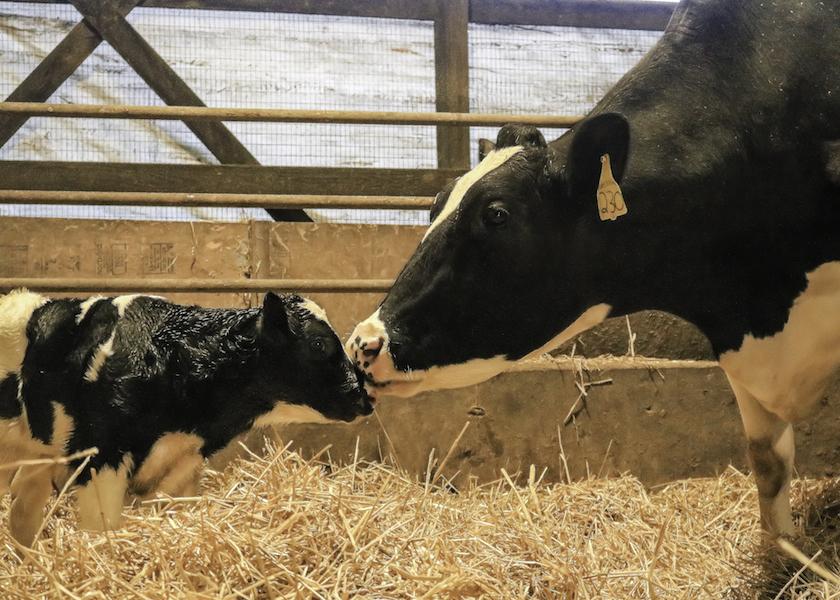Knock Out Ketosis

Some dairy health problems on the farm hide in plain sight. Ketosis, the most common metabolic disease in U.S. dairy cows, is sometimes one of those, says Garret Oetzel, DVM and professor, University of Wisconsin School of Veterinary Medicine.
He cites research that indicates 80% to 90% of fresh dairy cows with ketosis do not show clinical signs, so producers often ask him, “What’s the fuss about?”
“With metabolic issues, what you can’t see can cost you,” Oetzel says.
Cows are ketotic when their blood concentration of the ketone β-hydroxybutrate (BHB) is equal to or greater than 1.2 mmol/L, according to Oetzel. “That’s what I consider the lower threshold,” he notes. “Clinical signs are more likely when the blood concentration is above 3.0 mmol/L.”
Ketosis contributes to wide-ranging losses. Reductions in milk production in ketotic cows commonly range between 3% and 7%. “If anything, I think that’s kind of low and it’s often more than that in high-producing cows,” Oetzel says.
Along with production losses, affected cows are three to 19 times at a greater risk for a displaced abomasum; they also have three times the likelihood compared to unaffected cows of being culled in the first 30 days after calving. In addition, ketotic cows are between 20% and 70% less likely to conceive than unaffected ones at first breeding. The one caveat, Oetzel says, is “you can sometimes reduce that with ovulation synchronization.”
A single case of ketosis costs dairy producers $298, on average, shows a study conducted by Cornell University veterinary researchers Jessica McArt and Daryl Nydam, along with Mike Overton, DVM, formerly with Elanco Animal Health, and published in the March 2015 Journal of Dairy Science. 1
McArt, DVM, PhD, DABVP (Dairy Practice), Cornell University College of Veterinary Medicine, references two common, differing etiologies of early lactation ketosis:
One cause is the animal’s inability to adapt to an early lactation energy deficit. “This occurs in the first two to three weeks – and I really think the first one or two weeks – when cows are in excessive energy deficit just before or after calving,” she says.
The second cause is what McArt refers to as energy intake limited. “This occurs more in the three- to six-week in-milk range,” she says. “This is when cows either don’t have the dry matter intake or are not provided with a diet that allows them the energy substrates for the level of milk production occurring as they get to peak milk.”
Gregg Hanzlicek, DVM, Kansas State University College of Veterinary Medicine, says the type of ketosis he sees most often on dairy farms throughout the Midwest is when cows and heifers develop a severe negative energy balance (NEB) prior to calving but the problem manifests itself approximately five to 15 days post-calving. The affected animals, which often are obese, will mobilize large amounts of body fat for energy, commonly resulting in a fatty liver, particularly in those animals with a body condition score (BCS) of greater than 3.75.
“The chain of events is extreme NEB pre-calving with lipolysis occurring faster than the liver can repackage it into lipoproteins,” Hanzlicek says. “The liver becomes fatty, function is compromised and gluconeogenesis cannot be performed. That causes further lipolysis, with the liver infiltrated with more fat, causing an immune system negative impact.”
Regular, ongoing testing is needed. To determine whether cows are ketotic, Oetzel says the use of BHB is the defacto standard for finding and measuring ketosis. He encourages veterinarians to help producers implement a regular cow-side testing program – weekly, if possible – that can help prevent the occurrence of ketosis.
For testing purposes, Oetzel says his current recommendation is to use ketone test strips. He says to collect blood from the tail vein – not the milk vein – with a 22- to 25-gauge needle and a 1 to 3 mL syringe, using care to place the blood on the strip. The strip can then be placed in a hand-held monitor to determine the amount of BHBA present.
For treatment purposes, McArt recommends that ketotic cows receive an oral drench 300 mL of propylene glycol once daily for three to five days and an injection of Vitamin B12. She notes that cows with mild to moderate ketosis will have about a 60% success rate of resolving their ketosis after this treatment. Recent work by McArt and veterinary colleagues Michael Capel and Sabine Mann show that additional treatment with intravenous dextrose does not improve disease or milk yield outcomes.2 However, McArt notes that their study examined a limited number of cows with severe ketosis, BHBA above 3.0 mmol/L, so the true effect of dextrose on severely ketotic cows remains unclear.
She adds that cows have a fair to good prognosis when their blood BHB is under 3.0 mmol/L but a poor prognosis if their BHBA is greater than 6.0, especially for a sustained period of time.







